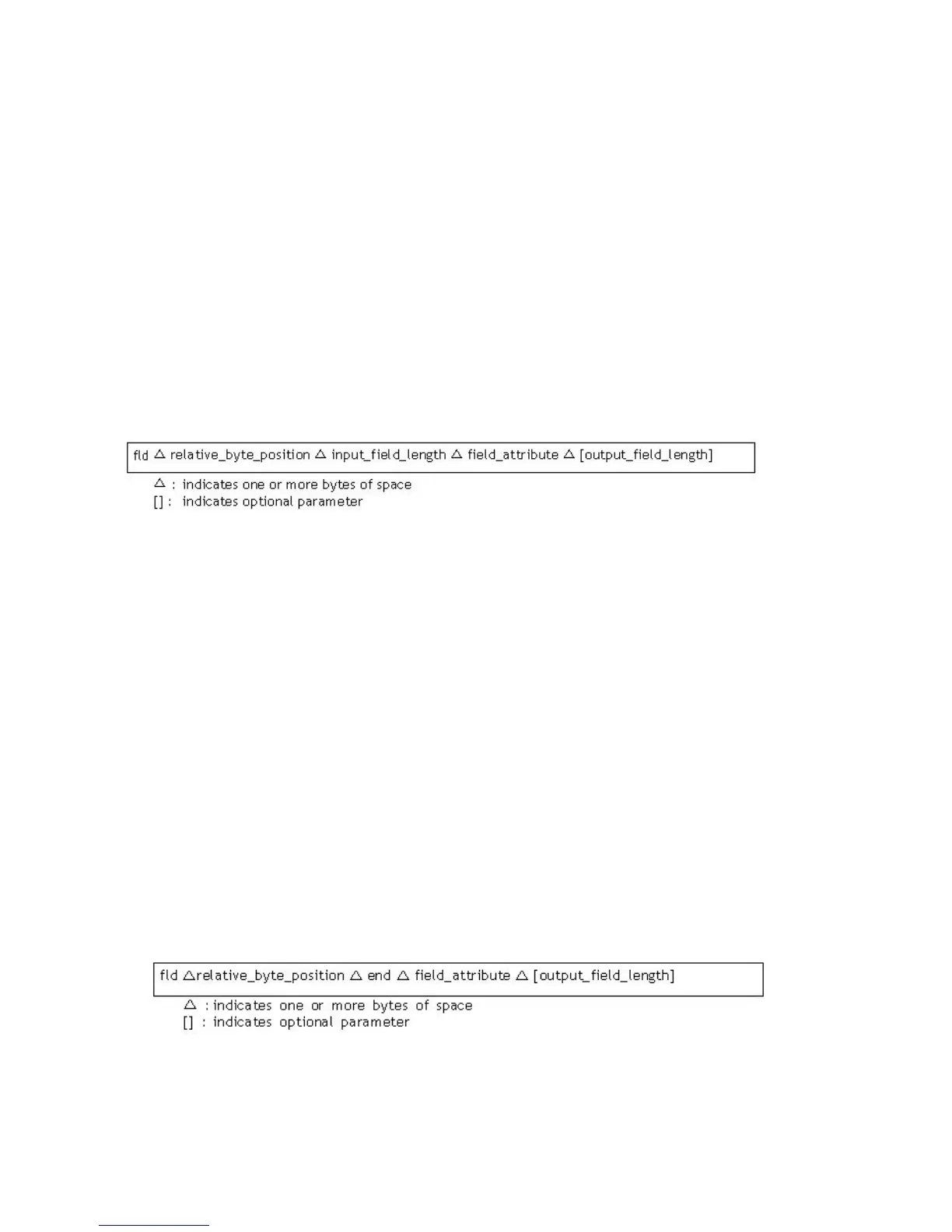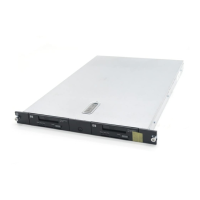Creating a Field Definition File
Create a Field Definition file to specify the position of the fields to be converted, the type of conversion
to be performed on those fields, how the result should be edited and output to the output record, and
the length of the output field.
A Field Definition file is created for each record format (field configuration) found in the database
data file to be converted. For each field in the input record, specify its position, length, type of code
conversion to be performed, and output length, in the format described below.
Use editors such as vi to create the Field Definition file as a text file. The maximum file size is 1,000
lines, including comments. To use the file, store it in the current directory of the open systems (UNIX/PC
server).
The Field Definition file consists of field definition statements, an end statement, and comments.
Field Definition Statement
Specify a line for a field definition statement for each field in the input record in the order they appear,
starting from the first field of the record (Figure 26).
Figure 26 Field Definition Statement
.
• fld: Keyword (reserved word) to indicate a field definition statement.
• relative_byte_position: Specify a relative byte position within the record to indicate where the field
begins, using a decimal value starting from 0.
• input_field_length: Specify the byte length of the input (source) field using a decimal value.
• field_attribute: Specify the type of code conversion to be performed on the field as follows:
• Suppress output : SKIP
• No code conversion: NOP
• Alphanumeric character conversion: CHAR:OPnn fFor OPnn, see Table 7 on page 50)
• Double-byte character conversion: KANJI:OPnn (for OPnn, see Table 7 on page 50)
• Numeric conversion: NUM:OPnn (for OPnn, see Table 8 on page 50)
• output_field_length: Specify the byte length of the field's output (target) area, using a decimal
value. This parameter can be omitted if the length is the same as the byte length of the input field.
This parameter must be omitted for fields with no code conversion and fields that suppress output.
If the field is the last field in the record and if the rest of the record is included in this last input
field, the byte length of the input field can be simply specified with “end” as shown below (because
you do not need to specify a specific value, this allows you to create a field definition state-
ment/Field Definition file for multiple data sets/records that is the same except for the length of
the last field) (Figure 27):
Figure 27 Last Field In The Record
.
Using Data Exchange Code Converter44

